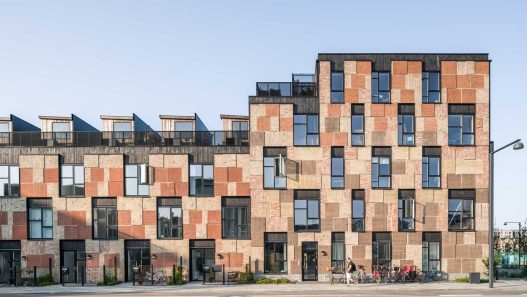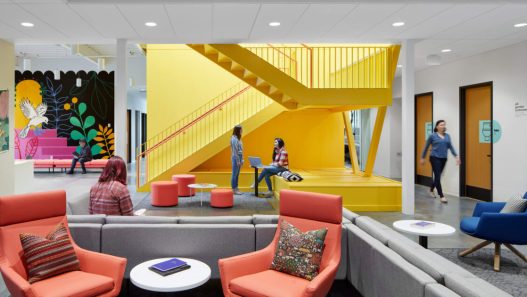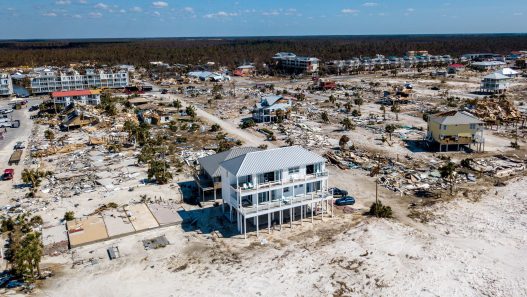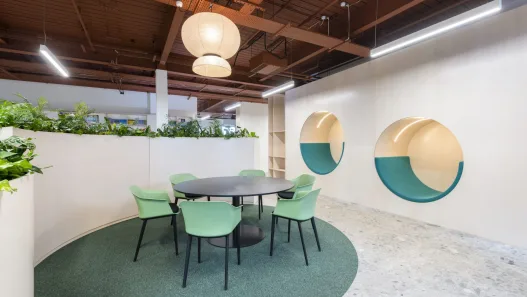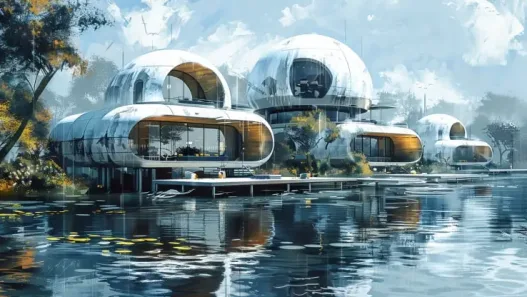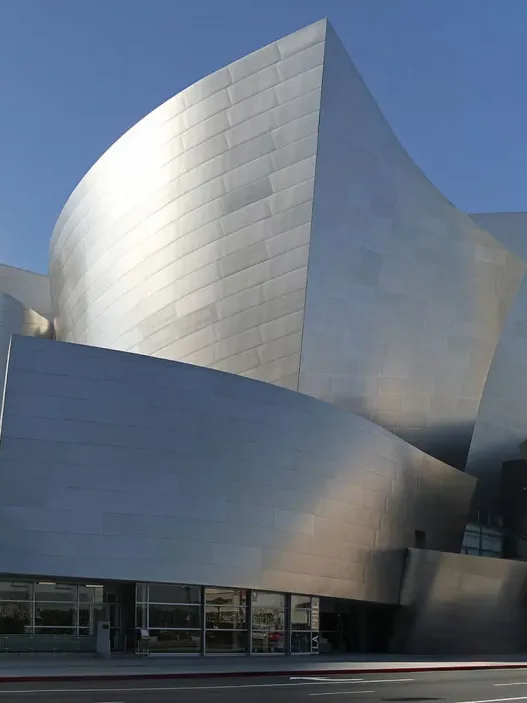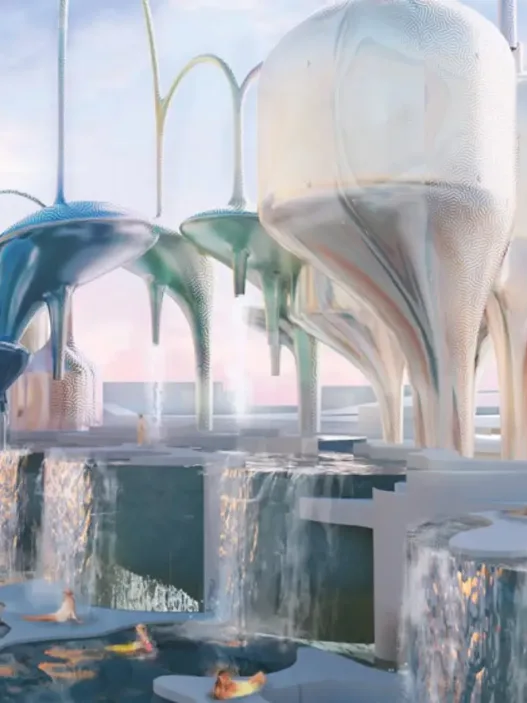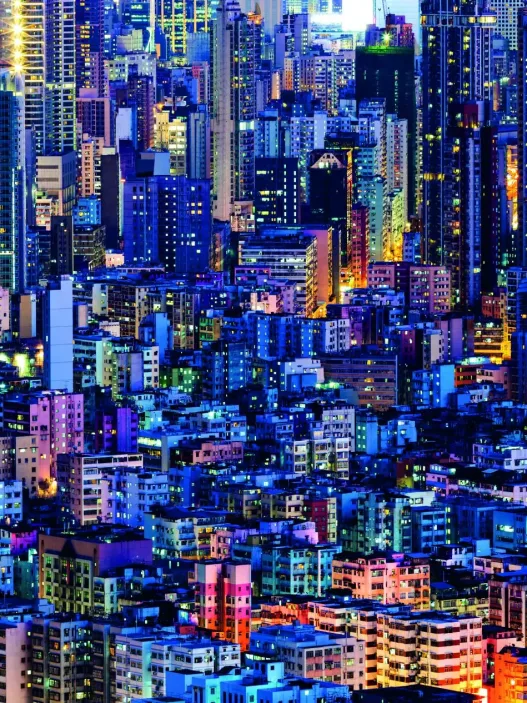Floating cities represent a bold and innovative response to the challenges posed by rising sea levels, urban overcrowding and the need for sustainable living. Designed to float on bodies of water, these cities blend architecture with the aquatic environment, offering a glimpse into a future where humanity can thrive in harmony with nature.
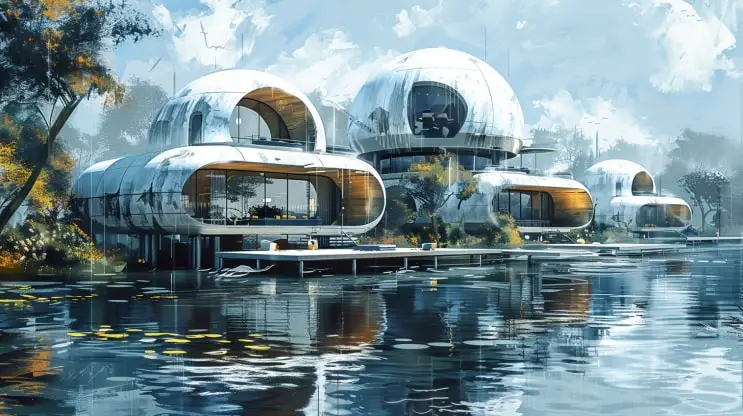
Definition and Concept
In essence, a floating city is an urban settlement anchored to the seabed or designed to float freely on the water. These structures are designed to withstand the forces of nature while providing a sustainable living environment. The concept includes modular designs that can be expanded or adapted depending on the needs of the population. Floating cities are envisaged as self-sufficient communities that include residential, commercial and recreational areas, all connected by walkways or waterways.
The essence of floating cities lies in their ability to adapt to changing environmental conditions. They can be built in areas vulnerable to flooding or rising sea levels, creating new opportunities for settlement in areas previously considered uninhabitable. This adaptability not only fulfils urgent housing needs, but also offers possibilities for innovative urban planning.
Historical Context
The idea of building on water is not entirely new. Throughout history, cultures ranging from the stilted houses of Southeast Asia to the intricate canals of Venice have developed floating structures. These early models demonstrated humanity’s ability to live in harmony with water. The modern floating city concept began to gain traction in the late 20th century, fuelled by advances in technology and a growing awareness of climate change.
In the 1960s, architect and inventor Buckminster Fuller introduced the idea of the floating city as part of his vision of a sustainable future. Fuller’s concepts laid the foundation for future research into floating architecture. As environmental concerns intensify, especially with the onset of climate change, the concept of floating cities has turned into a practical solution for urbanisation challenges.
The Importance of Life on Water
Life on water offers numerous advantages, especially in terms of sustainability and resilience. As urban areas expand, land scarcity is becoming a pressing issue. Floating cities offer a viable alternative by using water surfaces for development and minimising the environmental impact on land ecosystems. This not only preserves natural habitats, but also allows for the creation of green spaces within the urban fabric.
Furthermore, floating cities can be designed to utilise renewable energy sources such as solar, wind and wave energy. By integrating these technologies, they can significantly reduce their carbon footprint and contribute to a more sustainable future. As climate change continues to threaten coastal regions, floating cities are emerging as a proactive approach to provide safe and resilient living environments.
Global Trends in Urbanisation
The global urbanisation trend is accelerating and more than half of the world’s population now lives in cities. This rapid growth brings with it significant challenges such as overcrowding, pollution and inadequate infrastructure. Floating cities can overcome these problems by providing alternative living spaces that are both innovative and sustainable.
Countries facing the threat of sea level rise, such as the Netherlands and the Maldives, are particularly interested in floating city solutions. These regions are investing in research and development to create floating communities that can withstand climate impacts while offering a high quality of life. The integration of smart technologies into urban planning ensures efficient resource management and improved living conditions.
Overview of Current Projects
Around the world, several ambitious projects are underway to realise the concept of floating cities. The Oceanix City, a prototype designed to float on the ocean and accommodate thousands of inhabitants, is a notable example. This city is intended to be fully self-sufficient with sustainable energy solutions and innovative waste management systems.
Another important initiative is the Floating Island Project in French Polynesia, which aims to create a series of sustainable floating islands to combat rising sea levels and provide shelter for displaced communities. These projects demonstrate the potential of floating cities to not only provide shelter, but also to stimulate economic growth and cultural exchange.
As we look towards the future, floating cities offer a glimpse into a new way of living by stimulating our imagination. They force us to rethink our relationship with water and inspire innovative solutions for sustainable urban living. By embracing this visionary concept, we can pave the way for resilient communities that thrive in harmony with our planet.
The idea of floating cities has captured the imagination of architects, urban planners and environmentalists. As populations grow and land becomes increasingly scarce, the idea of creating habitable spaces on water surfaces is not just a fantasy, but a potential solution to urban challenges. These cities are innovative not only in their design, but also in their approach to sustainability and community life. They represent a blend of human creativity and respect for the natural world.
Architectural Principles of Floating Cities
Design Considerations
When designing floating cities, architects should consider several unique design elements. First and foremost, the layout should address both functionality and aesthetics. Design often prioritises open spaces that encourage community interaction while ensuring accessibility to essential services such as education, health and recreation. In addition, structures need to be modular, allowing for expansion or reconfiguration as the population grows or changes.
A critical aspect of design is the integration of nature. Floating cities often include gardens, parks and water features that not only enhance beauty, but also improve air quality and provide habitats for local wildlife. This biophilic design approach creates a harmonious balance between human habitation and the surrounding marine environment, encouraging residents to engage with nature every day.
Structural Innovations
The structural innovations behind floating cities are remarkable and focus on buoyancy, stability and flexibility. Engineers are using the latest materials and techniques to ensure that these cities can withstand a variety of weather conditions, including storms and rising sea levels. One common method is to use pontoons or floating platforms made of environmentally friendly materials that provide stability while being lightweight.
In addition, the design must take into account water movement and tidal changes. Structures often incorporate flexible connections and flexible anchoring systems to adapt to changing water levels. This adaptability is crucial to maintain the integrity of the buildings and ensure the safety of the occupants.
Sustainability Practices
Sustainability is at the centre of floating city concepts. These urban areas aim to minimise their ecological footprint by integrating renewable energy sources such as solar panels and wind turbines. Waste management is another important aspect; floating cities can turn waste into resources by utilising advanced systems for waste recycling and management.
Water purification systems that ensure residents have access to clean drinking water while minimising the impact on the marine ecosystem are also crucial. Using innovative technologies, floating cities can create a closed-loop system where waste is recycled, energy is produced sustainably and resources are conserved.
Materials Used
The materials chosen for the construction of floating cities play a vital role in terms of overall sustainability and durability. Lightweight and durable materials such as recycled plastics, bamboo and advanced composites are often favoured. These materials are not only buoyant but also resistant to corrosion from salt water, which is crucial for longevity.
Furthermore, the use of local resources can help reduce the carbon footprint associated with transport. For example, some designs incorporate materials that are readily available in the surrounding environment to encourage a sustainable approach to construction. By prioritising environmentally friendly materials, floating cities can minimise their environmental impact and contribute to a more sustainable future.
Integration with the Marine Environment
Integrating floating cities with the marine environment is essential for both ecological balance and community well-being. This requires careful planning to ensure that urban development does not degrade marine ecosystems. Floating structures may include features such as underwater gardens or artificial reefs that support aquatic life and also provide recreational opportunities for residents.
In addition, careful consideration of local wildlife and habitats is necessary. Floating cities can act as a buffer, protecting shorelines from erosion and acting as refuges for various species. By fostering a symbiotic relationship between human settlement and marine ecosystems, these cities can provide a model for sustainable living that respects and enhances the natural world.
In conclusion, floating cities represent a revolutionary approach to urban living in the face of today’s challenges. Through innovative design principles, structural developments, sustainable practices and a deep respect for the marine environment, they offer a glimpse into a future where humanity can co-evolve with nature and create a harmonious balance that benefits both people and the planet.
Floating cities represent a bold vision for the future of urban living, combining innovation with sustainability to tackle pressing issues such as climate change and overpopulation. As sea levels rise and urban space becomes scarce, the idea of creating floating habitats on water is gaining traction. These visionary concepts aim not only to provide living spaces, but also to create communities that are in harmony with their aquatic surroundings. In this research, we will review notable case studies, highlighting the unique characteristics of floating cities and their potential impact on urban life.
Case Studies of Important Floating Cities
Ocean Spiral
The Ocean Spiral, a concept developed by Japanese construction firm Shimizu Corporation, envisages a futuristic underwater city designed to float and thrive in harmony with the ocean. This ambitious project will consist of a spherical structure housing residential, commercial and research facilities connected by a spiral-shaped pathway descending into the depths of the sea.
The design of the Ocean Spiral emphasises sustainability and incorporates renewable energy sources such as tidal and wave energy to power the city. Its creators envision a self-sustaining ecosystem where food can be grown on underwater farms and waste is efficiently recycled. By harnessing the vast resources of the ocean, the Ocean Spiral aims to create a new paradigm for urban living that respects marine life and addresses the challenges of rising sea levels.
Blue21’s Floating Neighbourhoods
Blue21, a Dutch organisation specialising in floating architecture, focuses on creating innovative neighbourhoods that can adapt to changing water levels. Their projects include floating homes and community spaces designed to provide a high quality of life while minimising environmental impact.
One of Blue21’s notable initiatives is the development of floating neighbourhoods in the Netherlands, where the threat of flooding is a real concern. These neighbourhoods feature modular homes that can rise and fall with the water, providing safety and stability. The designs prioritise natural materials and energy-efficient technologies, making these neighbourhoods not only resilient but also attractive places to live. By rethinking urban design in this way, Blue aims to inspire other regions to consider floating solutions as a viable alternative.
Seasteading Institute Projects
Founded by pioneers of innovative governance, the Seasteading Institute promotes the idea of creating autonomous floating communities on the ocean. Their project envisages self-governing societies free from the constraints of traditional land-based politics, able to experiment with new forms of governance and social structures.
One of their proposals involves building floating platforms that can support diverse communities, from eco-conscious settlers to technology innovators. These platforms would be modular and easily expanded and adapted as needs change. The Seasteading Institute aims to test new ideas in governance and co-living, paving the way for more flexible and responsive social models that can address the complexities of modern life.
Floating City Project in Maldives
Known for its stunning islands and delicate geography, the Maldives is exploring floating city concepts as a solution to rising sea levels. The Floating City Project aims to create a sustainable urban environment that can withstand the challenges of climate change while preserving the beauty of the surrounding waters.
Designed to accommodate approximately 20,000 residents, the floating city will include homes, schools and recreational areas connected by canals. The aim is to minimise the ecological footprint by using sustainable building materials and renewable energy sources. This project aims not only to provide a safe living environment for island residents, but also to serve as a model for other island nations facing similar threats.
Other Global Initiatives
Around the world, various initiatives are emerging that explore the potential of floating cities. From experimental projects in Singapore to proposals in Africa and the Americas, the idea of floating urban environments is gaining momentum. These projects often showcase the versatility of floating architecture, with a focus on flexibility, sustainability and community engagement.
For example, some designs incorporate green technologies and community gardens, encouraging a connection between residents and their environment. Others emphasise cultural aspects, blending local traditions with modern design principles to create unique living spaces. Each initiative contributes to a growing body of knowledge on how humanity can adapt to changing landscapes and climates.
Ultimately, floating cities offer more than an escape from traditional urban challenges; they represent a forward-thinking approach to living in harmony with nature. As we continue to explore these visionary concepts, the potential to transform our relationship with water and urban living becomes increasingly apparent. Case studies from The Ocean Spiral, Blue21, the Seasteading Institute, the Maldives project and other global initiatives illustrate a promising future where innovation meets sustainability on the water’s surface.
Floating cities represent an innovative response to pressing challenges such as urbanisation and climate change. As sea levels rise and land becomes increasingly scarce, the idea of building cities on water offers a new perspective on sustainable living. These visionary concepts not only aim to create liveable spaces, but also strive to harmonise with the natural environment. In this research, we will examine the technological innovations that make these ambitious projects possible, highlighting energy solutions, water management systems, transport and connectivity, waste management technologies and smart city features.
Technological Innovations Supporting Floating Cities
Floating cities are based on advanced technologies that ensure their functionality and sustainability. These innovations are crucial to overcoming the unique challenges of living on water. From harnessing renewable energy to efficiently managing resources, technologies used in floating urban environments are poised to redefine our understanding of city living.
Energy Solutions
Energy is a crucial element in the sustainability of floating cities. Traditional energy sources often contribute to environmental degradation, but floating cities can benefit from renewable options that minimise their carbon footprint. Solar panels are a common feature installed on roofs and floating platforms to efficiently capture sunlight. Wind turbines can also be integrated into the design and utilise coastal winds to generate power.
Another innovative approach is the use of ocean thermal energy conversion (OTEC), which utilises the temperature differences between warm surface water and cold deep water to generate electricity. This method not only provides a constant source of energy, but also promotes energy independence for these urban areas. The combination of these renewable technologies enables floating cities to have a sustainable energy ecosystem, reducing dependence on fossil fuels and promoting environmental protection.
Water Management Systems
Water management is crucial in floating cities, where freshwater supply and wastewater treatment systems need to be meticulously designed. Advanced filtration and purification technologies can be used to convert seawater into potable water using methods such as reverse osmosis. This process ensures that residents have access to clean drinking water, even in the midst of vast areas of ocean.
In addition, rainwater harvesting systems can complement these efforts, collecting and storing rainwater for uses ranging from irrigation to sanitation. Wastewater treatment plants designed to operate efficiently on water can further protect precious freshwater resources by recycling grey water for non-potable uses. Such integrated water management systems not only sustain daily needs, but also promote a circular economy within these floating habitats.
Transport and Connectivity
In floating cities, traditional land-based modes of transport need to be redesigned. Water-based transport options such as ferries and water taxis offer efficient ways to navigate between different parts of the city and connect to mainland areas. These vessels can be powered by renewable energy sources, ensuring that transport remains sustainable.
In addition, pedestrian-friendly designs such as boardwalks and floating pathways encourage walking and cycling, reducing the need for motorised transport. Advanced communication technologies such as high-speed internet and intelligent traffic management systems increase connectivity within the city, making it easier for residents to access services and interact with their communities. The integration of these transport solutions promotes a vibrant, interconnected urban environment that thrives on water.
Waste Management Technologies
Effective waste management is essential to maintain the health and cleanliness of floating cities. Innovative technologies are being developed to address the challenges of waste disposal in aquatic environments. For example, waste-to-energy systems can convert organic waste into energy, simultaneously reducing reliance on landfills and generating energy for the city.
Recycling initiatives are also crucial. Floating cities can implement comprehensive recycling programmes that promote sustainability by encouraging residents to separate waste at source. Advanced sorting technologies can automate the recycling process, ensuring materials are efficiently processed and reused. By prioritising waste management, floating cities can develop a culture of sustainability that resonates with their residents.
Smart City Features
To create a truly integrated and efficient floating city, smart technologies play a vital role. These features enhance urban living by promoting sustainability, safety and convenience. Smart grids optimise energy distribution, ensuring efficient use of power and reducing waste. Smart water management systems can monitor consumption and protect valuable resources by detecting leaks in real time.
Furthermore, the implementation of IoT (Internet of Things) devices enables seamless communication between various city systems. For example, smart sensors can monitor environmental conditions and alert residents to changes in weather or sea level. This data-driven approach enables proactive decision-making and improves the overall quality of life of city dwellers.
In conclusion, floating cities are not just a dream of the future, but a viable solution to the problems of urbanisation and climate change. Through innovative technologies in energy solutions, water management, transport, waste management and smart city features, these aquatic urban environments can develop sustainably. As we continue to explore and develop these concepts, the possibility of living harmoniously with our aquatic environment becomes ever more attainable.
Floating cities offer a tantalising vision of a future where urban life is seamlessly integrated with water. As climate change and rising sea levels threaten coastal communities, these innovative structures offer a potential solution for sustainable living. With their unique design, floating cities can provide a new way of living that is both resilient and adaptable. This research explores the social and economic implications of these visionary concepts and how they can reshape our understanding of society, economy and urban planning in a water-logged world.
Social and Economic Implications
The development of floating cities is not just about creating new architectural wonders; it is fundamentally about reshaping the way we live and interact. The implications of such a shift are profound, affecting community dynamics, economic structures and regulatory frameworks.
Community Building in Floating Cities
Creating a sense of community in floating cities is both a challenge and an opportunity. Unlike traditional urban environments, floating cities may require innovative approaches to strengthen social bonds. The design of common spaces such as parks, marketplaces and recreational areas will play an important role in bringing residents together.
Imagine a city where houses are gently floating on the water, but each unit is connected by floating walkways and communal centres. These spaces can host events, workshops and cultural festivals, encouraging interaction between different residents. Such environments can foster a strong sense of belonging, encouraging co-operation and shared experiences. Furthermore, the unique environment of living on the water can inspire a collective identity connected to the marine ecosystem and promote environmental stewardship among residents.
Economic Opportunities and Challenges
Floating cities offer numerous economic opportunities, but they also pose significant challenges. With new infrastructure, these cities can become centres of innovation, attracting entrepreneurs and businesses focused on sustainable technologies. The potential for eco-tourism can also be enormous, attracting visitors keen to experience life in a floating environment.
However, the economic viability of floating cities depends on careful planning and investment. Initial construction costs can be high, requiring advanced materials and technologies. In addition, ongoing operating costs, from maintenance of floating structures to waste management systems, must also be considered. Balancing these factors will be necessary to ensure that floating cities can develop economically and at the same time remain accessible to a diverse population.
Impact on Local Economies
As floating cities emerge, their presence will inevitably impact local economies, particularly in coastal areas. The emergence of new residents and businesses can stimulate economic growth, create jobs and encourage local enterprise. For example, demand for goods and services in floating cities can lead to the creation of new markets, benefiting surrounding communities.
However, this transformation can also create challenges for existing local economies. The influx of people and resources can drive up property prices and change the character of neighbourhoods, potentially displacing long-time residents. It is therefore crucial that planners engage with local communities to ensure that the development of floating cities complements rather than undermines existing economic systems.
Regulatory and Legal Considerations
The establishment of floating cities raises complex regulatory and legal questions. Because they exist on water, they often fall outside traditional jurisdictional boundaries, making governance difficult. Questions of ownership, resource management and environmental protection need to be addressed to create effective policies.
In emerging floating cities, it is vital to establish clear rules governing construction, settlement and environmental impact. This can involve collaboration between governments, legal experts and environmental organisations to create frameworks that ensure sustainability and equal access. Furthermore, involving residents in the regulatory process can strengthen communities and foster a sense of shared responsibility for their unique living environment.
Public Perception and Acceptance
The success of floating cities ultimately depends on public perception and acceptance. For many, the idea of living on water can evoke feelings of excitement and curiosity. However, concerns about safety, environmental impact and lifestyle changes need to be addressed.
Public education campaigns can play an important role in shaping perceptions. Advocates can help address concerns by showcasing successful models and emphasising the benefits of floating living, such as resilience to climate change and reduction of urban sprawl. Furthermore, involving potential residents in the design process can foster a sense of ownership and commitment to their future home. As floating cities move from concept to reality, understanding and addressing public sentiments will be crucial to their long-term success.
Floating cities represent an innovative response to the challenges posed by climate change and urbanisation. By examining their social and economic impact, we can understand how these visionary concepts can transform our future. Through thoughtful community building, economic planning and regulatory frameworks, floating cities can become a sustainable and vibrant part of our urban landscape/
Floating cities represent a groundbreaking approach to urban living, blending innovative design with the need to adapt to changing environmental conditions. As the world population continues to grow and climate change poses significant threats, these futuristic living spaces offer not only a solution to overcrowding, but also a sustainable way to coexist with nature. In this research, we will explore the future of floating cities, their potential to combat climate change, exciting design innovations, scalability and the importance of global collaboration.
The Future of Floating Cities
The concept of floating cities is no longer limited to science fiction; it is becoming a tangible reality. As urban areas face challenges such as rising sea levels and limited land, architects and urban planners are looking to water for solutions. Floating cities promise a new beginning where communities can thrive without disregarding the fragile ecosystems around them. These cities can take various forms, from individual houseboats to vast networks of interconnected platforms. The vision is to create vibrant spaces that not only offer shelter but also enhance quality of life through sustainable practices and innovative technologies.
Foreseen Trends in Urban Development
Looking to the future, several key trends are emerging that will shape the floating city concept in urban development. Firstly, there is an increasing emphasis on sustainability. As cities grapple with pollution and waste, floating urban designs prioritise environmentally friendly materials and renewable energy sources. Furthermore, smart technology integration is coming into focus with cities incorporating sensors and data analytics to optimise resource use and improve living conditions.
Another trend is the focus on community and well-being. Floating cities of the future may prioritise shared spaces that encourage social interaction and allow residents to build strong bonds. This change can lead to more inclusive and resilient communities that thrive even in challenging circumstances.
Potential to Mitigate Climate Change
Floating cities offer significant promise in the fight against climate change. As global sea levels rise, traditional coastal cities face the risk of flooding and erosion. By building upwards and outwards on water, floating cities can adapt to changing conditions while minimising their ecological footprint. They can reduce dependence on freshwater resources by using advanced water management systems to recycle and treat water.
They can also promote biodiversity by creating marine habitats and help restore ecosystems damaged by urbanisation. Floating cities can harness the power of the ocean and generate renewable energy through wave and tidal systems, making them self-sufficient and less dependent on fossil fuels.
Innovative Design Ideas on the Horizon
The design of floating cities varies as much as the imagination allows. Architects are exploring numerous concepts that blend aesthetics with functionality. One intriguing idea involves modular design, where units can be added and removed according to the needs of the population and environmental conditions. This flexibility allows cities to grow and adapt without extensive reorganisation.
Biophilic design, which incorporates natural elements into urban spaces, is also gaining traction. Floating cities can include rooftop gardens, vertical forests and living walls, creating a harmonious balance between urban life and nature. These designs not only enhance the beauty of the city, but also improve air quality and provide habitats for local wildlife.
Scaling and Repeatability
For floating cities to become a viable solution, they need to be scalable and replicable in different regions. Successful prototypes can serve as blueprints for future developments by demonstrating how communities can be built efficiently and sustainably. Scaling up involves not only the physical expansion of these cities, but also the development of policies and frameworks that support their growth.
Regions with similar environmental challenges can adopt these designs, adapting them to local conditions and cultures. This adaptability will be crucial in building a network of floating cities working towards common sustainability and resilience goals worldwide.
Global Co-operation and Governance
The journey towards floating cities cannot be done alone; it requires global co-operation and effective governance. Governments, private sectors and communities must work together to develop regulations and standards that ensure safety, sustainability and equity in these new urban environments.
International partnerships can facilitate knowledge sharing and resource pooling, enabling innovative ideas to cross borders. Furthermore, involving the local population in the decision-making process will be crucial in creating floating cities that truly reflect the needs and aspirations of their residents.
Looking to the future, floating cities offer not only a vision for urban living, but also a beacon of hope for sustainable development. They invite us to rethink how we live on our planet, to embrace creativity and co-operation to create a better way of life in harmony with our environment.



